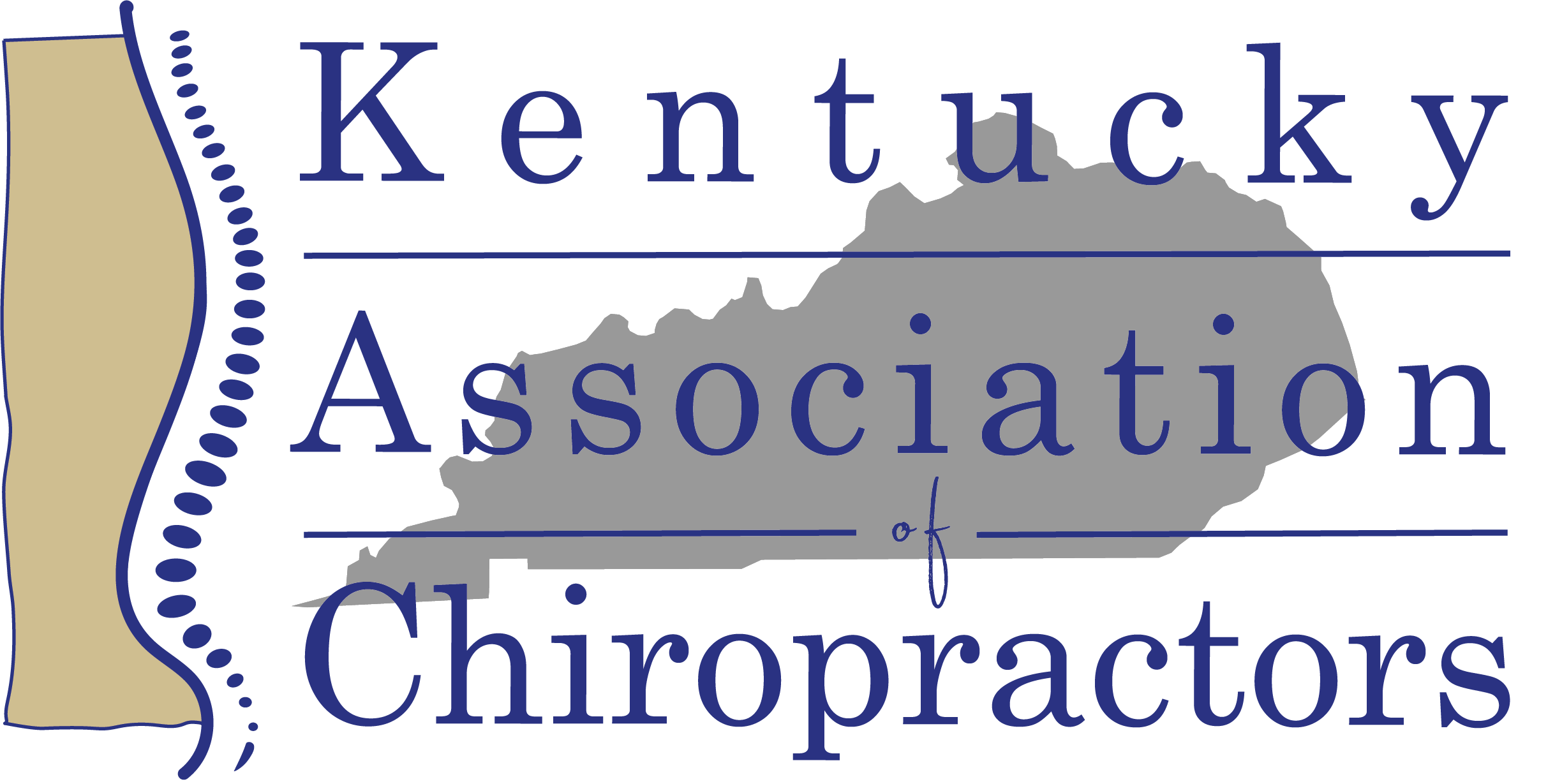Bill Moreau DC DACBSP FACSM
Dr. Moreau will be speaking at the KAC’s 109th Annual Convention. He will be presenting on Concussion Evaluation & Management (2 CEs) and Navigating the Maze: Understanding Radiculopathy, Discopathy, Stenosis, and Myelopathy in Chiropractic Care (2 CEs). Learn more and register here: https://thekac.org/109th-kac-annual-convention. Thank you do Dr. Moreau for this article and NCMIC for sponsoring him at our upcoming convention.
Introduction
Love or hate artificial intelligence (AI), one thing you can count on for certain is AI is here to stay and will continue to grow exponentially. The Harvard School for Public Health reports a 40% projected improvement in health outcomes when using AI for identifying a diagnosis. Additionally, AI can be used to help create a patient chart note for an office visit or help solve a clinical dilemma. It is easy to see how AI could help spot medication interactions, but can it help a Doctor of Chiropractic and what are some common challenges to consider before jumping into using AI in your chiropractic practice?
In the evolving landscape of healthcare, chiropractic practices are increasingly turning to technology to enhance patient outcomes. One of the most promising advancements in this field is the integration of Artificial Intelligence (AI) into developing personalized treatment plans. By harnessing AI algorithms, chiropractors can deliver evidence-based, patient-specific interventions that not only improve recovery times but also optimize patient satisfaction.
Selecting the right AI tools for Doctors of Chiropractic requires careful evaluation to ensure they are trustworthy, and evidence based. It’s important to choose platforms backed by clinical research and validated by industry standards. Key features to prioritize include robust data security measures to protect patient privacy, user-friendly interfaces to facilitate smooth adoption by staff, and seamless interoperability with existing electronic health record (EHR) systems. By focusing on these attributes, practices can maximize the benefits of AI, improving patient care without compromising security or efficiency. Fully vetting AI providers and seeking peer recommendations can further guide Doctors of Chiropractic in making informed decisions.
AI Applications in the Chiropractic Office
Patient Assessment and Diagnostics: The potential of AI to enhance clinical decision-making, improve efficiency, and personalize patient care is possible. You can ask AI for help make a diagnosis by writing patient information into the AI but be sure to not include any protected health information! The AI query is not typically HIPAA compliant.
AI may enhance diagnostic accuracy in the future by improving the analysis of imaging results, such as X-rays and MRIs. Might AI algorithms also one day detect subtle patterns that may be missed by the human eye, allowing for more precise assessments of spinal alignment, joint integrity, or soft tissue conditions? This potential enhanced capability might not only aid chiropractors in making more accurate diagnoses but also increases the likelihood of catching early signs of musculoskeletal abnormalities, enabling timely interventions and better patient outcomes.
For example, when a commonly used AI platform was asked, “What are the five most common causes of low back pain with one sided leg pain below the knee?” the top five answers were: Lumbar Disc Herniation (Herniated Disc), Lumbar spinal stenosis, Piriformis Syndrome, Sacroiliac (SI) Joint Dysfunction, and Facet Syndrome.
If the same question is asked but the patient also has a fever the answers changed to Spinal Epidural Abscess, Discitis/Osteomyelitis (Vertebral Osteomyelitis), Cauda Equina Syndrome with Infection, Pyelonephritis (Kidney Infection), and Septic Sacroiliitis.
Administrative Efficiency: AI can help with streamlining administrative tasks, such as charting, billing, coding, and scheduling. A common use of AI is to use AI technology to help construct patient SOAP notes simultaneously with patient encounters. AI “Scribe” services are available that will listen to the communications in the treatment room and construct a draft SOAP note for the doctor to review. Some programs even construct treatment plans and patient care guidelines. While this sounds great because charting can be a laborious and time-consuming activity for the doctor, there are significant pitfalls that must first be addressed to manage risk and ensure accuracy of the AI generated note.
As AI becomes more integrated into chiropractic care, navigating the regulatory and legal landscape is a critical component of integration. Healthcare providers must stay informed about evolving regulations regarding AI, ensuring compliance with standards related to patient privacy, data protection, and clinical safety. Additionally, the use of AI-assisted diagnosis and treatment recommendations raises complex liability issues. To mitigate risks, chiropractors should adopt clear guidelines for AI use, maintain robust documentation, and ensure that AI remains an aid to—not a replacement for—professional clinical judgment.
The first step is to ensure you are following the laws regarding recording of conversations! The WSCA home office asked our attorney about the legalities of using AI to record a doctor-patient conversation for the purpose of creating a chart note. There are important legal considerations to consider before using AI to help you chart.
Washington is one of 11 states that require both parties to consent to recording a conversation with some limited exceptions that do not apply to chiropractic practice. Before using AI to record and create a chart entry the requirement step is to obtain and document the patient consented to a recording of the doctor-patient interaction for the purpose of supporting AI assisted charting.
The specific Washington regulation RCW 9.73.030 states in part:
Where consent by all parties is needed pursuant to this chapter, consent shall be considered obtained whenever one party has announced to all other parties engaged in the communication or conversation, in any reasonably effective manner, that such communication or conversation is about to be recorded or transmitted: PROVIDED, That if the conversation is to be recorded that said announcement shall also be recorded.
It makes sense to consult your attorney for your specific state laws and to help you create a written consent document addressing the consent to record a conversation issue and add a signed consent into the patient’s records to achieve and document consent from the patient to record interactions.
Effective integration of AI tools in chiropractic practices requires thorough staff training to ensure these technologies are used optimally. Educating clinicians and support staff on how to navigate AI systems, interpret outputs, and incorporate recommendations into patient care is essential for maximizing benefits. Equally important is establishing a step-by-step integration plan to manage the transition smoothly. This includes setting clear objectives, gradually introducing AI tools into clinical workflows, and continuously monitoring progress. By investing in comprehensive training and a structured implementation strategy, clinicians can enhance their efficiency while maintaining high standards of patient care.
Personalized Treatment Plans: AI is revolutionizing how healthcare data is analyzed and applied. By leveraging advanced machine learning algorithms, AI can sift through vast amounts of patient data—including the health history, imaging reports, and even real-time biometric data—to create tailored recommendations. In chiropractic care, where each patient’s condition is unique, this ability to customize treatment is transformative.
Traditionally, chiropractors develop treatment plans based on clinical guidelines, experience, and patient feedback. AI can improve this process by analyzing patient-specific data points and comparing them against large datasets from similar cases. This approach enables the creation of evidence-based treatment plans that are more precisely tailored to an individual’s needs.
Beyond in-clinic chiropractic adjustments, AI can extend to customizing exercise programs for patients. AI-driven platforms can analyze a patient’s mobility, muscle strength, and flexibility data to design home exercise routines that are aligned with their recovery goals. These algorithms continuously learn from patient progress and can adjust recommendations dynamically, offering a responsive approach to rehabilitation.
Challenges and Considerations
When utilizing AI tools in chiropractic care, handling and protecting sensitive patient data is crucial. The integration of AI technologies comes with inherent risks, such as data breaches or misuse, making it essential to implement robust security protocols. Ensuring data privacy not only safeguards patient trust but also ensures compliance with regulatory standards.
- Data Privacy: Chiropractors must ensure that patient data is handled securely, adhering to privacy regulations such as HIPAA. Patients need to feel confident that their personal information is being safeguarded.
- Adapting to New Technologies: For many practices, adopting AI-driven tools will require an investment in both technology and training. Chiropractors must be willing to learn how to integrate AI systems into their clinical workflows to fully leverage their benefits.
- Maintaining the Human Touch: While AI can enhance clinical decision-making, it should never replace the essential human connection between a Doctor of Chiropractic and their patient. Technology should support, not substitute, the hands-on, personalized care that defines the chiropractic profession.
The Future of Chiropractic Care and AI: A Hybrid Approach
The future of chiropractic care lies in a hybrid model that combines the best of both worlds: the precision and scalability of AI with the compassionate, individualized care that chiropractors provide. As AI technology continues to evolve, those practices that embrace it early on will likely see a competitive advantage, leading to better patient outcomes, increased efficiency, and enhanced patient satisfaction.
By integrating AI into their practices, chiropractors can move beyond traditional, generalized treatment plans and deliver highly personalized care that is both data-driven and patient-centric. As the chiropractic field continues to advance, the use of AI in creating personalized treatment plans may represent a significant leap forward, empowering chiropractors to optimize care in ways previously unimaginable.
While AI offers powerful tools to enhance chiropractic practices, there is a potential risk of clinicians becoming overly reliant on these technologies. This dependency could diminish the role of professional judgment, which remains essential in interpreting AI-driven recommendations. It’s important to recognize that AI algorithms are not infallible and can produce errors or biased outputs. Doctors of Chiropractic must balance the use of AI with their own clinical expertise, ensuring that technology serves as a supportive tool rather than a substitute for hands-on assessment and personalized decision-making. Maintaining this balance is crucial to providing safe, effective patient care.
The author and the WSCA conferred with attorneys on the legal aspects of this article, but we do not offer legal advice. If any doctor plans on recording patients, the doctor should run their intended process by their own attorney before implementing any recording of a conversation.


